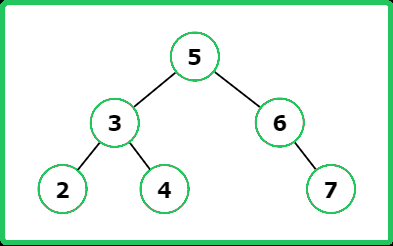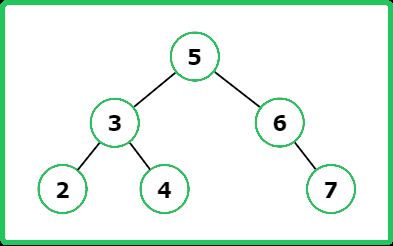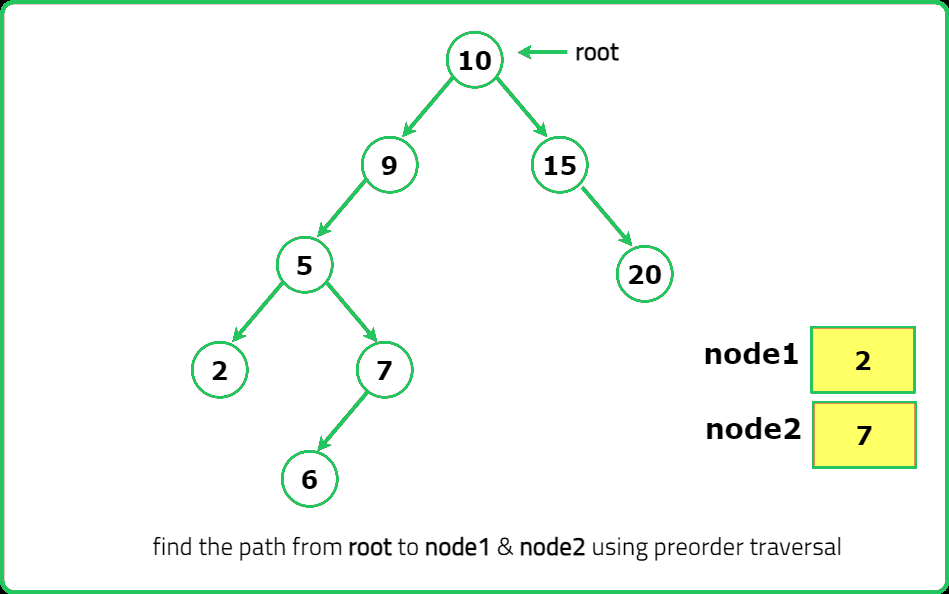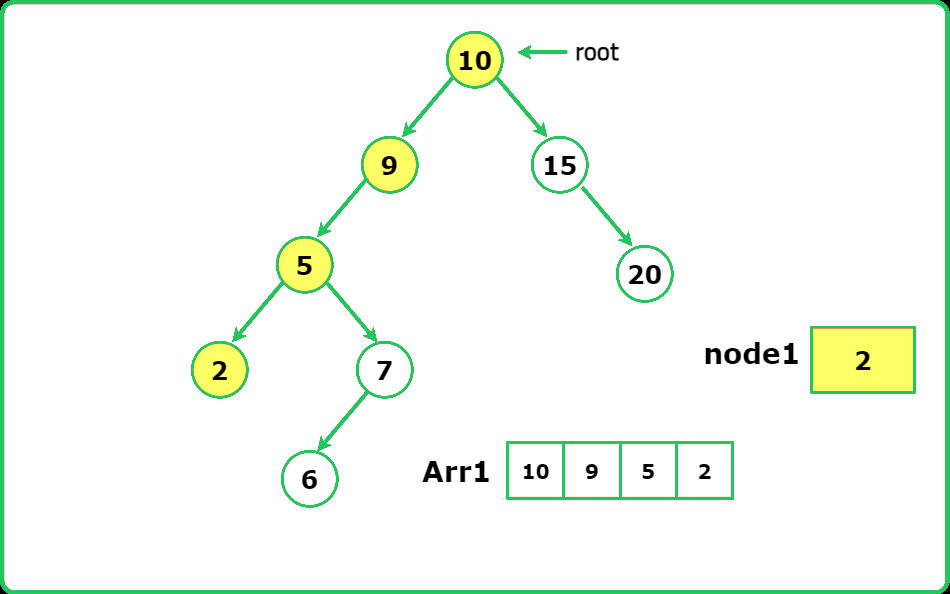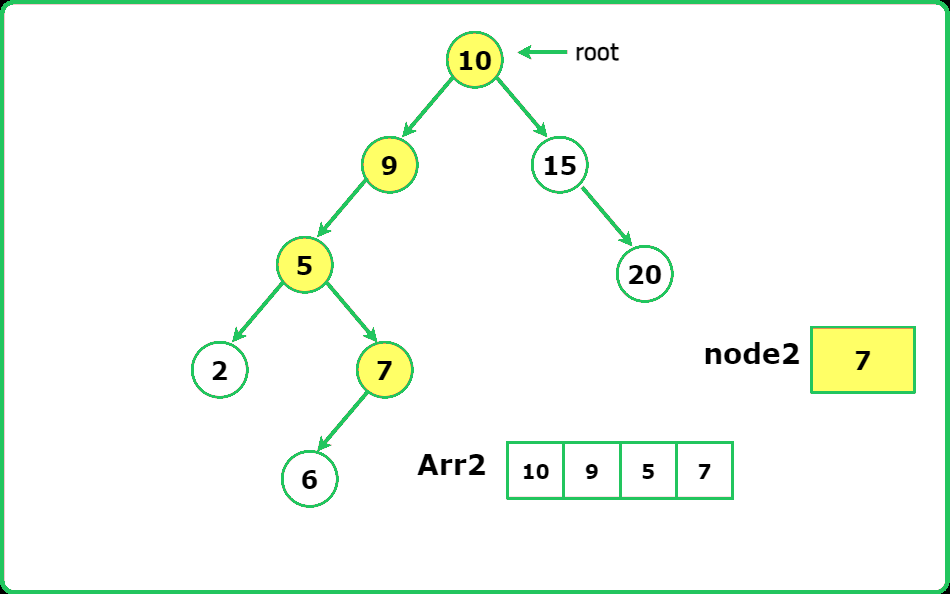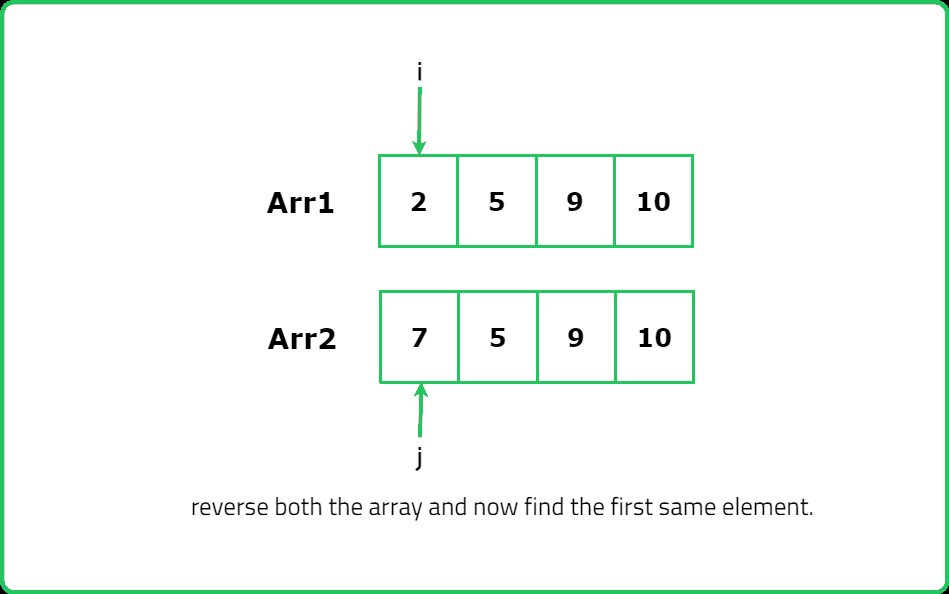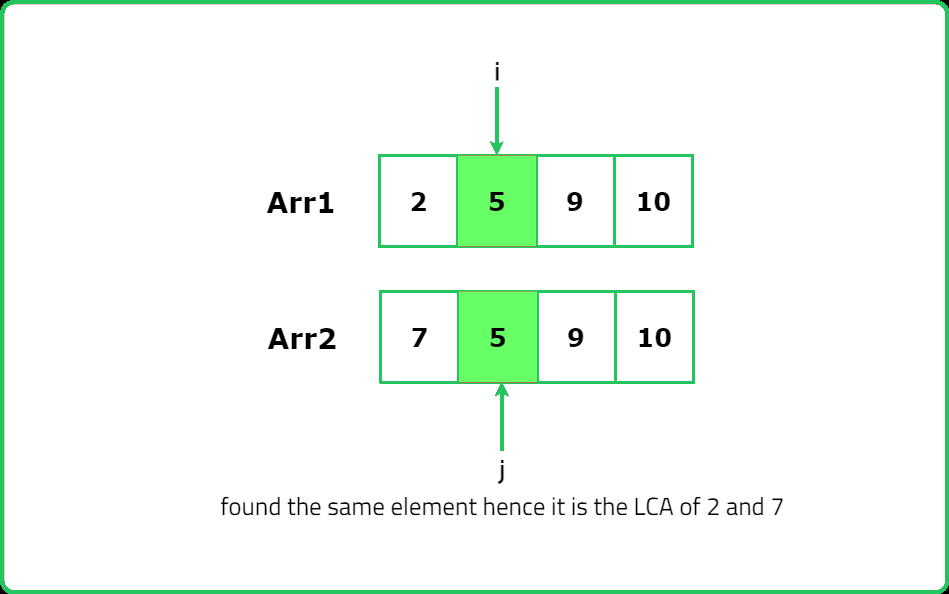1234567891011121314151617181920212223242526272829303132333435363738394041424344454647484950515253545556575859606162636465666768697071727374757677787980818283848586878889909192
#include <bits/stdc++.h>
using namespace std;
// Definition for a binary tree node.
struct TreeNode {
int data;
TreeNode *left;
TreeNode *right;
TreeNode(int val) : data(val), left(nullptr), right(nullptr) {}
};
class Solution {
public:
// Function to find the path from the root to a given node with value 'x'
bool getPath(TreeNode* root, vector<int>& path, int x) {
// Base case: If the current node is null, return false
if (!root) {
return false;
}
// Add the current node's value to the path vector
path.push_back(root->data);
// If the current node's value is equal to the target value 'x', return true
if (root->data == x) {
return true;
}
// Recursively search for the target value 'x' in the left and right subtrees
if (getPath(root->left, path, x) || getPath(root->right, path, x)) {
return true;
}
// If the target value 'x' is not found in the current path, backtrack
path.pop_back();
return false;
}
// Function to find the lowest common ancestor of two nodes in a binary tree
TreeNode* lca(TreeNode* root, int p, int q) {
vector<int> path1, path2;
// Find paths from the root to the given nodes
if (!getPath(root, path1, p) || !getPath(root, path2, q)) {
return nullptr;
}
// Find the last common element in the paths
int i = 0;
while (i < path1.size() && i < path2.size() && path1[i] == path2[i]) {
i++;
}
// The last common element is the LCA
return new TreeNode(path1[i - 1]);
}
};
int main() {
// Create a sample binary tree
TreeNode* root = new TreeNode(3);
root->left = new TreeNode(5);
root->right = new TreeNode(1);
root->left->left = new TreeNode(6);
root->left->right = new TreeNode(2);
root->right->left = new TreeNode(0);
root->right->right = new TreeNode(8);
root->left->right->left = new TreeNode(7);
root->left->right->right = new TreeNode(4);
Solution sol;
// Find the LCA of nodes with values 5 and 1
TreeNode* ans = sol.lca(root, 5, 1);
if (ans != nullptr) {
cout << "LCA(5, 1) = " << ans->data << endl;
} else {
cout << "LCA(5, 1) is not present in the tree" << endl;
}
// Find the LCA of nodes with values 5 and 4
ans = sol.lca(root, 5, 4);
if (ans != nullptr) {
cout << "LCA(5, 4) = " << ans->data << endl;
} else {
cout << "LCA(5, 4) is not present in the tree" << endl;
}
return 0;
}
12345678910111213141516171819202122232425262728293031323334353637383940414243444546474849505152535455565758596061626364656667686970717273747576777879808182838485868788899091929394
import java.util.ArrayList;
import java.util.List;
// Definition for a binary tree node.
class TreeNode {
int data;
TreeNode left;
TreeNode right;
TreeNode(int val) {
data = val;
left = null;
right = null;
}
}
class Solution {
// Function to find the path from the root to a given node with value 'x'
boolean getPath(TreeNode root, List<Integer> path, int x) {
// Base case: If the current node is null, return false
if (root == null) {
return false;
}
// Add the current node's value to the path vector
path.add(root.data);
// If the current node's value is equal to the target value 'x', return true
if (root.data == x) {
return true;
}
// Recursively search for the target value 'x' in the left and right subtrees
if (getPath(root.left, path, x) || getPath(root.right, path, x)) {
return true;
}
// If the target value 'x' is not found in the current path, backtrack
path.remove(path.size() - 1);
return false;
}
// Function to find the lowest common ancestor of two nodes in a binary tree
public TreeNode lca(TreeNode root, int p, int q) {
List<Integer> path1 = new ArrayList<>();
List<Integer> path2 = new ArrayList<>();
// Find paths from the root to the given nodes
if (!getPath(root, path1, p) || !getPath(root, path2, q)) {
return null;
}
// Find the last common element in the paths
int i = 0;
while (i < path1.size() && i < path2.size() && path1.get(i).equals(path2.get(i))) {
i++;
}
// The last common element is the LCA
return new TreeNode(path1.get(i - 1));
}
public static void main(String[] args) {
// Create a sample binary tree
TreeNode root = new TreeNode(3);
root.left = new TreeNode(5);
root.right = new TreeNode(1);
root.left.left = new TreeNode(6);
root.left.right = new TreeNode(2);
root.right.left = new TreeNode(0);
root.right.right = new TreeNode(8);
root.left.right.left = new TreeNode(7);
root.left.right.right = new TreeNode(4);
Solution sol = new Solution();
// Find the LCA of nodes with values 5 and 1
TreeNode ans = sol.lca(root, 5, 1);
if (ans != null) {
System.out.println("LCA(5, 1) = " + ans.data);
} else {
System.out.println("LCA(5, 1) is not present in the tree");
}
// Find the LCA of nodes with values 5 and 4
ans = sol.lca(root, 5, 4);
if (ans != null) {
System.out.println("LCA(5, 4) = " + ans.data);
} else {
System.out.println("LCA(5, 4) is not present in the tree");
}
}
}
123456789101112131415161718192021222324252627282930313233343536373839404142434445464748495051525354555657585960616263646566676869707172
# Definition for a binary tree node.
class TreeNode(object):
def __init__(self, val=0, left=None, right=None):
self.data = val
self.left = left
self.right = right
class Solution:
def getPath(self, root, path, x):
# Base case: If the current node is null, return False
if not root:
return False
# Add the current node's value to the path
path.append(root.data)
# If the current node's value is equal to the target value 'x', return True
if root.data == x:
return True
# Recursively search for the target value 'x' in the left and right subtrees
if (self.getPath(root.left, path, x) or self.getPath(root.right, path, x)):
return True
# If the target value 'x' is not found in the current path, backtrack
path.pop()
return False
def lca(self, root, p, q):
path1, path2 = [], []
# Find paths from the root to the given nodes
if not self.getPath(root, path1, p) or not self.getPath(root, path2, q):
return None
# Find the last common element in the paths
i = 0
while i < len(path1) and i < len(path2) and path1[i] == path2[i]:
i += 1
# The last common element is the LCA
return TreeNode(path1[i - 1])
# Example usage
if __name__ == "__main__":
# Create a sample binary tree
root = TreeNode(3)
root.left = TreeNode(5)
root.right = TreeNode(1)
root.left.left = TreeNode(6)
root.left.right = TreeNode(2)
root.right.left = TreeNode(0)
root.right.right = TreeNode(8)
root.left.right.left = TreeNode(7)
root.left.right.right = TreeNode(4)
sol = Solution()
# Find the LCA of nodes with values 5 and 1
ans = sol.lca(root, 5, 1)
if ans:
print("LCA(5, 1) =", ans.data)
else:
print("LCA(5, 1) is not present in the tree")
# Find the LCA of nodes with values 5 and 4
ans = sol.lca(root, 5, 4)
if ans:
print("LCA(5, 4) =", ans.data)
else:
print("LCA(5, 4) is not present in the tree")
123456789101112131415161718192021222324252627282930313233343536373839404142434445464748495051525354555657585960616263646566676869707172737475767778798081828384858687888990
/**
* Definition for a binary tree node.
* class TreeNode {
* constructor(val = 0, left = null, right = null) {
* this.data = val;
* this.left = left;
* this.right = right;
* }
* }
**/
class Solution {
getPath(root, path, x) {
// Base case: If the current node is null, return false
if (root === null) {
return false;
}
// Add the current node's value to the path
path.push(root.data);
// If the current node's value is equal to the target value 'x', return true
if (root.data === x) {
return true;
}
// Recursively search for the target value 'x' in the left and right subtrees
if (this.getPath(root.left, path, x) || this.getPath(root.right, path, x)) {
return true;
}
// If the target value 'x' is not found in the current path, backtrack
path.pop();
return false;
}
lca(root, p, q) {
const path1 = [];
const path2 = [];
// Find paths from the root to the given nodes
if (!this.getPath(root, path1, p) || !this.getPath(root, path2, q)) {
return null;
}
// Find the last common element in the paths
let i = 0;
while (i < path1.length && i < path2.length && path1[i] === path2[i]) {
i++;
}
// The last common element is the LCA
return new TreeNode(path1[i - 1]);
}
}
// Example usage
const main = () => {
// Create a sample binary tree
const root = new TreeNode(3);
root.left = new TreeNode(5);
root.right = new TreeNode(1);
root.left.left = new TreeNode(6);
root.left.right = new TreeNode(2);
root.right.left = new TreeNode(0);
root.right.right = new TreeNode(8);
root.left.right.left = new TreeNode(7);
root.left.right.right = new TreeNode(4);
const sol = new Solution();
// Find the LCA of nodes with values 5 and 1
let ans = sol.lca(root, 5, 1);
if (ans !== null) {
console.log("LCA(5, 1) =", ans.data);
} else {
console.log("LCA(5, 1) is not present in the tree");
}
// Find the LCA of nodes with values 5 and 4
ans = sol.lca(root, 5, 4);
if (ans !== null) {
console.log("LCA(5, 4) =", ans.data);
} else {
console.log("LCA(5, 4) is not present in the tree");
}
};
main();
